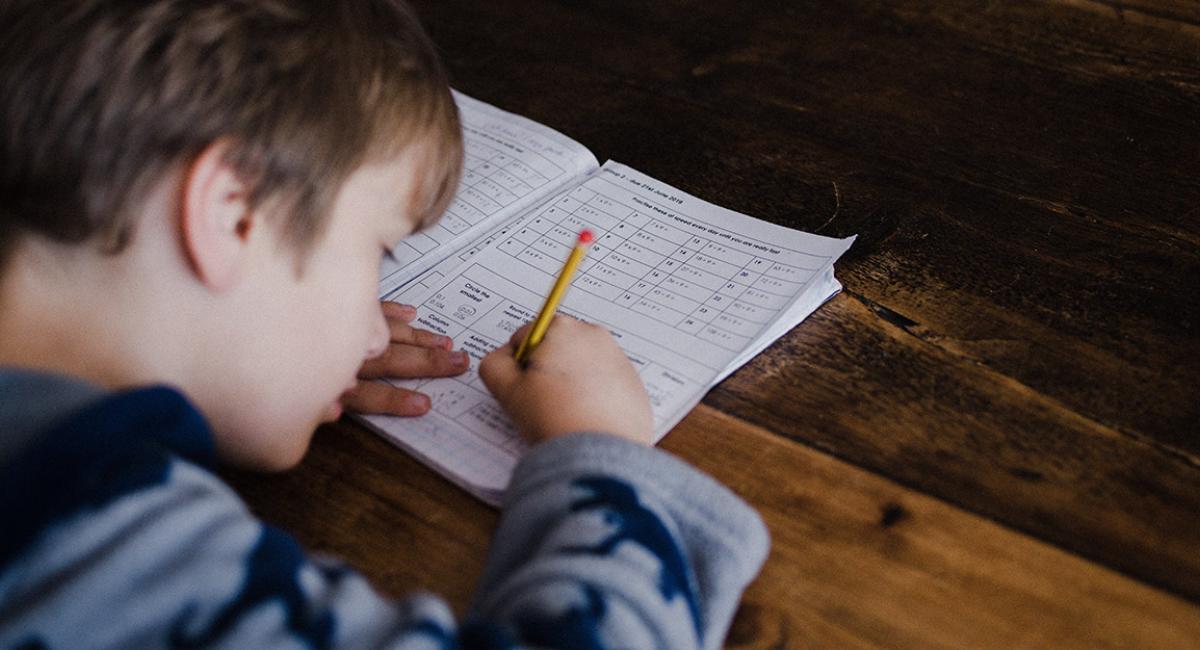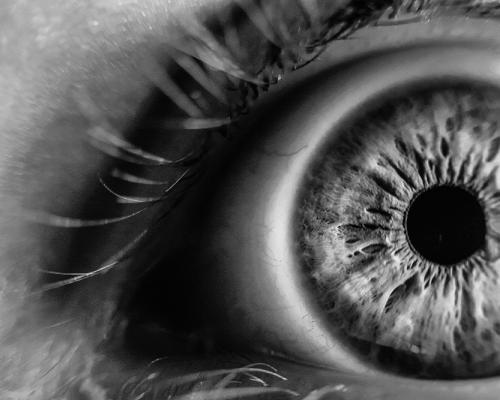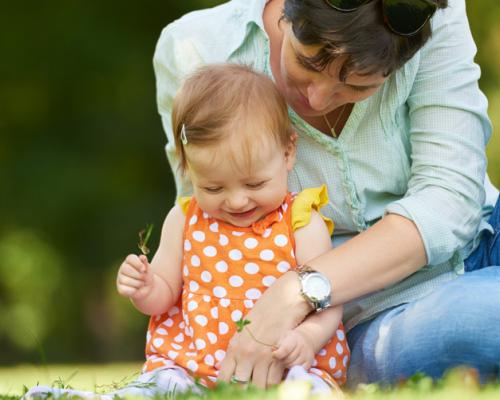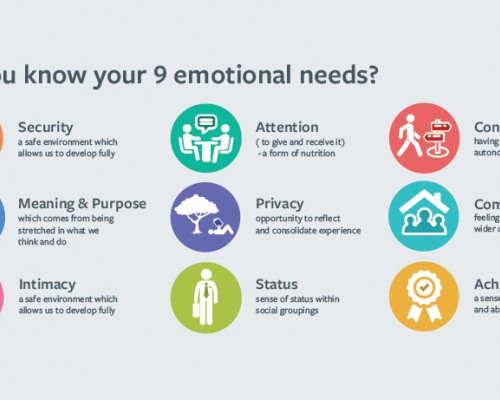Rehearsing Success
Paul Dow finds creative ways of using the human givens approach to help struggling students meet their emotional needs.
As a teacher of children with social, emotional and behavioural difficulties and a consultant to schools, I find the human givens approach an essential aid in training staff in how to manage pupils’ emotions. Recently, however, I have realised how well it can work to teach human givens principles directly to students themselves.
The head teacher of a secondary school serving deprived areas of Dundee had identified a group of 15-year-olds who were having difficulty socially within the school, struggling to manage chaotic emotions and behaviour and underachieving academically. Without effective intervention, the head knew, these young people, mostly boys, would leave school as soon as they turned 16, with minimal prospects of making anything of themselves. I was asked to run a workshop to help them manage their emotions more effectively and heighten their chances of success, whether in school or out in the ‘real’ world.
The first step was to set realistic goals for the day – to be held twice, each for a group of 14. Often the process of talking through goals with head teachers provides opportunities for learning – for instance, when it reveals that the notion of looking for positive outcomes has been overshadowed by the urgent need to stop negative behaviours or if the need to break global goals down into achievable chunks has been forgotten in the scramble to meet government targets. To strengthen the likelihood of the day’s being a success and to help reinforce the learning afterwards, I asked for members of staff to sit in on the workshops. This request enabled me to see how serious the school and the head teacher were about making the day work. The head teacher, forward-thinking in her approach and willing to put her money where her mouth is, came up trumps by allocating one member of senior management and one member of the guidance staff (teachers specifically designated to deal with pupils' personal or academic concerns) to each of the workshops. Any other members of staff interested were invited to join in too (and several did). This showed considerable commitment, as cover had to be arranged for all these key professionals for a whole school day.
After initial discussions with the head teacher and guidance staff, I called the day “Rehearsing Success: positive use of the imagination” and planned to cover emotional wellbeing (the human givens), how the brain works and other tricks of the mind, learned optimism, positive use of the imagination, and social skills for any setting. Well aware of the need to build rapport quickly with young people who can present extremely challenging behaviour, and thus make sure that real learning could start to happen, I decided to begin the day with a card trick. This would allow the young people to focus their attention on something outside of themselves (thereby lowering emotions and anxiety about the day), grab their attention and let me embed the expectations for the day and what they would learn. Card tricks work extremely well for this as they can lead people into a very relaxed place (especially if it is suggested that they need to focus, stay calm, etc, for the trick to work).
On their arrival at the first workshop, some of the students seemed apprehensive and withdrawn while others looked quietly belligerent or were giggling, clearly viewing the event as just a day off schoolwork. As I went through the ‘patter’ of a card trick, I introduced expectations of the day along with expectations of the card trick. I asked one lad to pick a card from a pack I was holding and to show it to the group: “I want you to remember that card and focus on it in your mind’s eye. See the number, the colour, the shape of the image of the suit. See it as vividly as you can in your imagination because we are going to use our imaginations more later in the day.” As I continued the card trick, asking one student to shuffle the pack, another to cut it, etc, I suggested that the techniques they were about to learn were no different from learning this simple card trick. The trick might look slick, even magical (although I don’t claim to be very good), but it was a skill that could be learned and, with practice, mastered. This, I told them, would hold true for all the day’s learning. Everyone would get the chance to talk and to be listened to respectfully by everyone else. I said all this before I revealed the number and suit of the card that had been chosen, while they were still sitting entranced, expectant and absorbing information uncritically, waiting to see if I had ‘got it right’.
show it to the group: “I want you to remember that card and focus on it in your mind’s eye. See the number, the colour, the shape of the image of the suit. See it as vividly as you can in your imagination because we are going to use our imaginations more later in the day.” As I continued the card trick, asking one student to shuffle the pack, another to cut it, etc, I suggested that the techniques they were about to learn were no different from learning this simple card trick. The trick might look slick, even magical (although I don’t claim to be very good), but it was a skill that could be learned and, with practice, mastered. This, I told them, would hold true for all the day’s learning. Everyone would get the chance to talk and to be listened to respectfully by everyone else. I said all this before I revealed the number and suit of the card that had been chosen, while they were still sitting entranced, expectant and absorbing information uncritically, waiting to see if I had ‘got it right’.
With the scene thus set, we began the first session with an activity carried out in groups: I gave each group a list of items such as ‘security’, ‘status’, ‘financial freedom’, ‘access to the internet’ and ‘a Mulberry handbag’, and asked them to categorise them into ‘needs’ and ‘wants’. This exercise led to a very interesting discussion among group members – for instance, might financial freedom be a need, rather than a want, because it makes it possible to meet important needs such as living somewhere safe and achieving certain things? The exercise clearly engaged the young people’s imaginations and gave each individual a chance to share their thoughts and opinions within the group. This in turn gave each individual an experience of being heard and of listening to others (giving and receiving attention) and of being valued and of having a role within the group (status). So, through the activity itself, I was able to emphasise how our needs can be met in a very real and meaningful way. Every group eventually arrived at the list of needs identified in the human givens approach and I was able to congratulate them. “It has taken psychologists years and years to identify these core needs and you have done it in 20 minutes!”
A need to work on
Students then completed an emotional needs audit on themselves and I asked them to highlight one need which they would like met in a healthier way. They didn’t have to share it; I encouraged them simply to be aware, during the course of the day, of any thoughts and ideas about how these needs could be better met and to jot them down, describing how creative insights emerge from our subconscious over time, after we have stopped actively thinking about something.
Next we looked at how our brains process information and particularly at how our emotions can hijack clear thinking. Gratefully borrowing an idea I read in a previous article in this journal by human givens practitioners Fred Grist and Mike Beard, I used the cartoon characters of the Incredible Hulk (powerful but not overly bright) and Batman (the thinking superhero) to illustrate the emotional brain and the neocortex and the principles of pattern matching.1
To ensure that all this had been understood and to allow the students an opportunity to personalise their learning, I asked them to create their own characters for the different parts of the brain and their own short play on how the brain processes information, using clippings from magazines, computer-generated images or their own artistic creations. After the two courses I ended up with 30 highly individual storyboards. For instance, one student used images of footballers Ronaldo and Zidane to represent his neo-cortex and emotional brain. The images showed Ronaldo in full flow, in control both of the ball and his body movement and aware of what was happening around him (neocortex). In contrast, the image for Zidane was of the infamous head-butting incident when he saw red, which led to his sending off in, and arguably to France’s loss of, the 2006 World Cup final. Others used images of animals – such as a husky dog, strong, powerful and needing to be controlled, however vital for movement and action – to represent the emotional brain. The main point – that heightened emotions can hijack clear thinking – made sense to the students and many of them talked of incidences when they had “gone off on one” without really thinking about it.
Staying calm
This led us neatly on to how to stay calm so that we can think clearly. Or “When someone tells you to f--- off and your mouth goes dry, how can you get your emotional arousal down quickly?” Although I jazzed the terminology up (for instance, through ‘kung-fu breathing’, as the first step in martial arts is to control the breath), I was struck by how open everyone was to the simple, unvarnished technique of 7/11 breathing. I could see people’s shoulders drop and most were comfortable enough to close their eyes. If any were giggling, I just built this in, as I talked them through it: “And you will find you can let the giggles go and, when you are ready, just relax …” The practice was so successful and so much enjoyed that two or three times during the day someone asked, “Can we do the 7/11 again?” So we used it periodically as a means of relaxation.
Once we were all relaxed and had access to our thinking brains, I introduced thinking styles and linguistic techniques we could use to influence our own behaviour. I am grateful to human givens therapist Chris Dyas for his article in this journal in which he described using the work of Derren Brown to illustrate to young people how language influences the choices we make.2 The Derren Brown clip “Itchy fingers” (the video clip, readily accessible on YouTube, shows young children pressing a button to open a box after Brown has expressly told them not to press it) clearly demonstrates the power of negative suggestion. We were able to extrapolate from this to the importance of setting positive goals and using positive language. It was brightly pointed out by someone, and elaborated on by others, that school rules tend to be phrased in the negative – “Do not run in the corridor”, etc – and that this isn’t, therefore, the best way to get students to keep them. I congratulated them on observing this, and their sense of pride – knowing something important that most adults clearly didn’t – was palpable.
We next looked at the three main thinking styles that mark the difference between optimism and pessimism. The power of pervasive, permanent and personal attribution (“I got my maths wrong – I’m rotten at everything”; “I’m never going to get another girlfriend/boyfriend”; “It’s all my fault”) were quickly understood and we spent some time playing verbal tennis in two teams – one acting as pessimism, and the other as optimism. Each round began with a scenario, for example, “You have just failed a test”, and then each team called out a response in keeping with ‘their’ thinking style – “I always fail everything” countered by “I know what to do now to get a better mark next time” and so on. The winner was the team that kept going longer, without repeating a point. Fun, physical and fast moving, the game showed us that, culturally perhaps, in Scotland we find pessimism easier and that if we want to learn optimism we do need to practise!
We also tackled social skills and how to strike up a conversation with someone they would like to get to know. I explained the idea of ‘yes-sets’ and how, by coming up with three or four statements that would inevitably elicit agreement, it is easier to create a connection. I also borrowed some more ideas from human givens therapist Chris Dyas, who suggests, along with mirroring body language, asking someone three questions and, from the answers, finding something to pay a subtle compliment about and something to agree with, then “repeat until the conversation takes on a life of its own.”2
A baby, a kiwi and a wigwam
The final session of the day looked at the positive use of the imagination and how to rehearse success. I started by announcing that imagination is stronger than will and, to demonstrate this, put up 20 random words, such as ‘baby’, ‘kiwi’ and ‘wigwam’, on PowerPoint and asked the students to memorise them. Then I hid the list and asked everybody to write down as many of the words as they could recall, and in the correct order. On average, they managed between 5 and 11 words and very few in any significant order. I then invited them to relax, as I was about to tell them a story, and to create an image for each part of the story, preferably strong ones that generated an emotional response, such as amusement or repulsion. I told a story using the 20 words and secretly prayed that my plan would work, as I leapt around the room, adapting a well-known memorising technique by describing in great detail a giant baby eating dozens of kiwis inside a wigwam. Afterwards, I asked the students to recall the list a second time, emphasising the need to stay relaxed and allow the images to come to mind. The scores shot up, with many students managing 20 out of 20 correct answers in the correct order. This gave everyone not only a strong feeling of achievement but also reinforced the suggestion that the outcomes set for the day were based on skills that they could learn.
With the key learning that imagination is stronger than will and that an image linked with an emotion is always stronger than one without, we moved on to practising guided imagery and rehearsal of success. Because of their earlier keenness to practise 7/11 breathing, it was easy to do this. I asked everyone to think of a place that was special to them, either real or imagined, and to come up with a goal for better meeting the need that they had identified in the morning session. Through guided imagery, they then rehearsed achieving it.
We want more
In a feedback session at the end of the day, comments such as “Brilliant – I want more of this”, “This should be taught in all schools” and “I wish the day was longer!” left me convinced that the human givens approach should have a place within the curriculum. One suggestion that received enthusiastic support was the idea of holding such sessions across schools, so that no one would know anyone else and the role-playing of social skills could be done for real – this from young people who had struggled even to make eye contact. As the students were preparing to leave, one boy asked if he could try and recall the list of words – in reverse! Buoyed by his confidence, I stood by as this young man correctly repeated the entire list backwards, to rapturous applause from students and staff.
It now rests with the guidance staff to follow up the longer-term effects of the day on those present. The school has also invited me back to work with a group of students from the pupil council, who are setting up a peer-mentoring project. I spent a day with the 15 students involved, again taking the human givens approach as the basis of the training and teaching them about innate needs, how the brain works and, most importantly in this context, the RIGAAR approach (rapport building, information gathering, goal setting, accessing resources, agreeing strategies and rehearsing success), to help them use their time most effectively to help the distressed youngsters they would meet. This has all been taken on board with enthusiasm and has given the pupils the confidence to start and the desire to learn more. I am extremely excited to hear how this venture grows and how the human givens helps to guide their work.
are setting up a peer-mentoring project. I spent a day with the 15 students involved, again taking the human givens approach as the basis of the training and teaching them about innate needs, how the brain works and, most importantly in this context, the RIGAAR approach (rapport building, information gathering, goal setting, accessing resources, agreeing strategies and rehearsing success), to help them use their time most effectively to help the distressed youngsters they would meet. This has all been taken on board with enthusiasm and has given the pupils the confidence to start and the desire to learn more. I am extremely excited to hear how this venture grows and how the human givens helps to guide their work.
Finally, the head teacher has asked me to consider training the entire staff group at the school. This would mean that the principles of the human givens approach would underpin not only the way the school is managed but potentially form the foundation for the management of each subject and individual class group. I am not naïve enough to think that the approach and the techniques I offer will be received by all staff with open arms and result in a climactic change in practice. However, as the approach proves to me time and time again, its validity lies in the way people respond to its common sense and accessibility. It does not come across as preachy or vague or another unwelcome ‘to do’ to add to the list of initiatives all schools labour under. So, as every journey starts with one step, I hope the human givens influence on Scottish education will continue to grow steadily.
Paul Dow is a qualified teacher and human givens therapist. Having worked in a mainstream setting and managed an early intervention project, he now works with young people who display extreme emotional and behavioural difficulties. He also offers training to organisations with an interest in the emotional wellbeing of young people and runs workshops for children and young people on the theme of emotional intelligence. He is currently setting up a social enterprise called Listening Stone, the aim of which is to promote emotional health and wellbeing in young people.
This article first appeared in "Human Givens Journal" Volume 17 - No. 2: 2010
 Spread the word – each issue of the Journal is jam-packed with thought-provoking articles, interviews, case histories, news, research findings, book reviews and more. The journal takes no advertising at all, in order to maintain its editorial independence.
Spread the word – each issue of the Journal is jam-packed with thought-provoking articles, interviews, case histories, news, research findings, book reviews and more. The journal takes no advertising at all, in order to maintain its editorial independence.
To survive, however, it needs new readers and subscribers – if you find the articles, case histories and interviews on this website helpful, and would like to support the human givens approach – please take out a subscription or buy a back issue today.
References
- Grist, F and Beard, M (2006). Evidence of learning. Human Givens, 13, 1, 9–15.
- Dyas, C (2005). “It’s what’s right with you that fixes what’s wrong.” Human Givens, 12, 2, 16–20.
Latest Tweets:
Tweets by humangivensLatest News:
HG practitioner participates in global congress
HG practitioner Felicity Jaffrey, who lives and works in Egypt, received the extraordinary honour of being invited to speak at Egypt’s hugely prestigious Global Congress on Population, Health and Human Development (PHDC24) in Cairo in October.
SCoPEd - latest update
The six SCoPEd partners have published their latest update on the important work currently underway with regards to the SCoPEd framework implementation, governance and impact assessment.
Date posted: 14/02/2024












